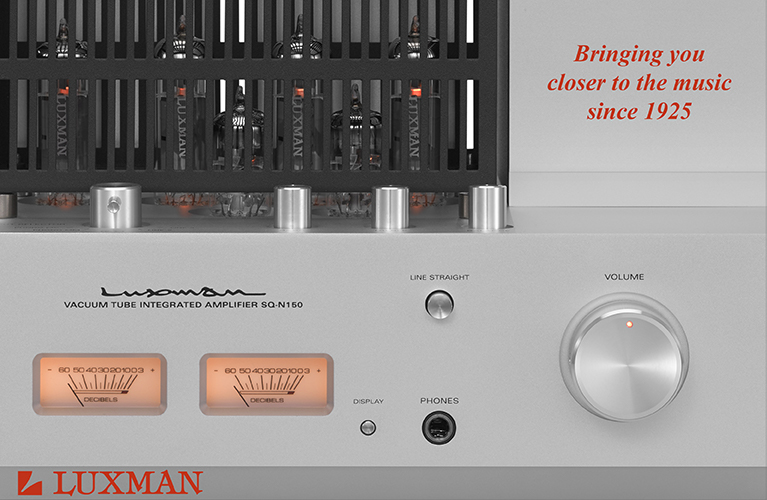In December 2018, I wrote the first article to appear under the “System One” column name. In that article I explained: “The title means someone’s first system, or someone’s only system—or something else, depending on what’s covered that month. What won’t change is the theme around which I wrote the first two pieces: cost-effective, high-performing equipment that many people can afford.”
I purposely didn’t define what “many people can afford” means, mostly to give me some freedom to write about whatever I saw fit for the column. But in the past, I have tried to keep the price of most of the products I covered to about $1000 or less, though there have been a few times I’ve gone over that amount. However, I’ve never gone this far over the line—this month’s subjects are Rotel’s RA-1572MKII integrated amplifier, which sells for $2099.99 (all prices in USD), and Sonus Faber’s Lumina III loudspeaker, which commands $2199 for the pair. So more than double what I first envisioned for this column. Still, I wanted to include them because they still are relatively affordable insofar as hi-fi goes, and they both have features and performance characteristics that could persuade budget-oriented shoppers to dig deeper into their wallets.
Descriptions
Sonus Faber’s Lumina series, which includes the Lumina I bookshelf ($899/pair) and Center I (or CI) center-channel speaker ($699/each), was announced in September of last year. They all use the same 1.14″ DAD (Damped Apex Dome) tweeter, which has a silk diaphragm with a damping device that holds the apex of the dome in place to optimize dispersion. The rest of the drivers have cones made from a blend of paper and other natural fibers.
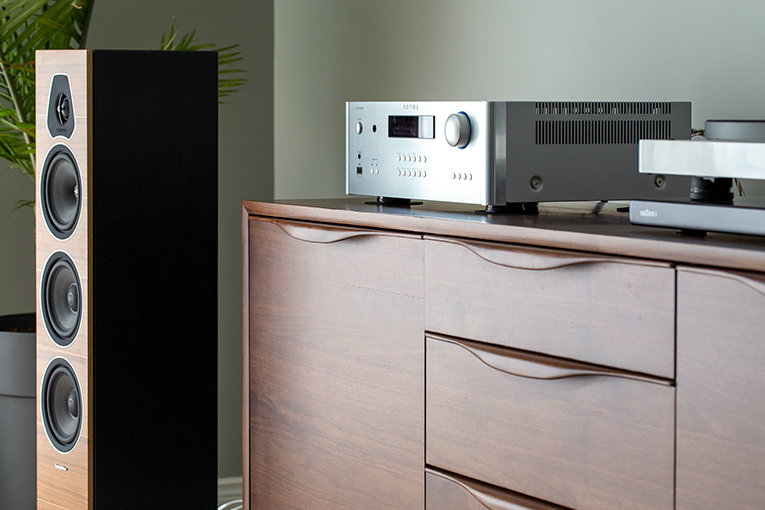
The Lumina I is a two-way, bottom-ported design that adds a 4.7″ midrange-woofer to the tweeter. The Center I is also a two-way, but has two 4.7″ midrange-woofers positioned on the front baffle so they flank the tweeter. The Lumina III is a three-way, compact floorstander (it stands 39″ high) that has a 5.9″ midrange directly below the tweeter and two 5.9″ woofers below the midrange. The floorstander is supplied with a plinth that, with its four spiked feet attached, must be mounted on the bottom of the cabinet—the spikes make space underneath the cabinet to allow the bottom port’s bass frequencies to escape and propagate into the room.
The Luminas come in three finishes, but only the front baffle, which is about 3/8″ thick and made from seven thin layers of wood, differs. For all models, the sides and top are covered with black faux leather, and the back is painted matte black.
In the Black finish, the baffle is painted a high-gloss black, so you can’t even tell it’s wood. The wood grain is visible in the Wenge and Walnut finishes, but the Wenge is a rich, reddish color, while the Walnut is a light brown. Both wood finishes also have narrow, light-colored wood slats horizontally inset into the baffle’s topmost wood layer. The Lumina III has seven of these slats, making the front look like eight separate sections of wood—and the effect looks sharp. So sharp, in fact, that even though the pair of speakers I received came with magnetically attached grilles, I only put them on when I had to protect the drivers, such as when kids who might try to poke at them were around. Otherwise, I didn’t want to cover those beautiful front baffles—and I doubt people who buy them will want them covered, either.
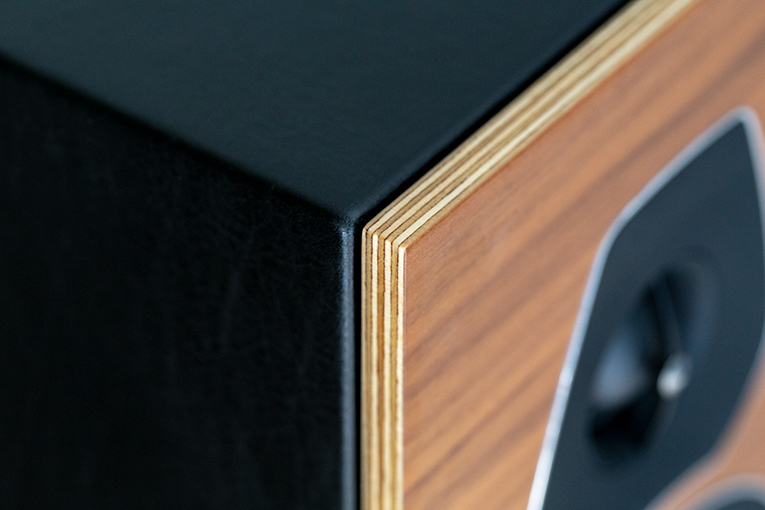
Diego Estan already reviewed a pair of Lumina IIIs for SoundStage! Access shortly after the series was announced, so my article this month can be considered a follow-up to that. But even though this is the second time we’ve written about the Lumina III, it wasn’t the same pair of speakers. Diego’s set were in the Black finish, which he thought looked fine, but I didn’t like them at his place or at my place after he had finished with them. No surprise–I rarely like the way any all-black speakers look.
When I told Livio Cucuzza, who leads product development at Sonus Faber, that I didn’t like the look of the speakers, he immediately wanted to send me a pair in a wood finish so that, visually, the Lumina III didn’t leave a bad taste in my mouth. I’m glad he did—the Walnut models Cucuzza sent looked much nicer in my room than the Black pair. They also brought more brightness and elegance into the room than other speakers I had set up in it over the last couple of years.
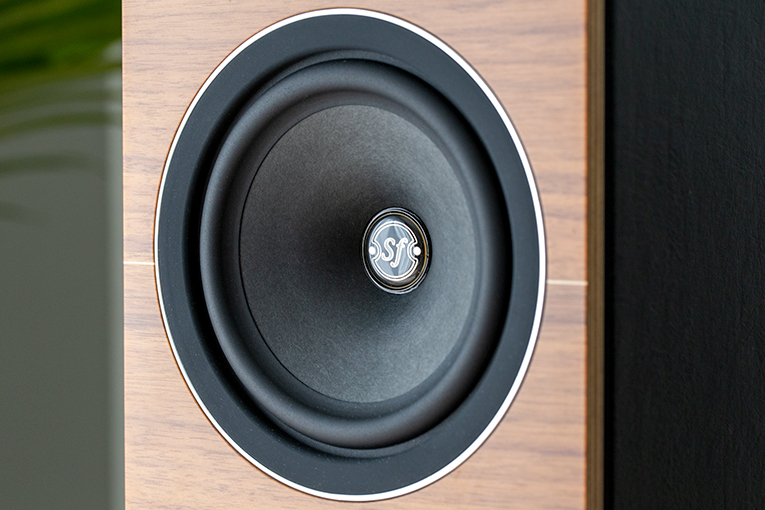
One more thing: the manufacturing of Luminas hasn’t been farmed out to the Far East, which often happens with entry-level product lines. In fact, with the lone exception of the Canadian-made Totem Acoustic Skylight—which I wrote about in March 2020—every other speaker I’ve written about in this column was made in the Far East. Instead, the Luminas are made in Sonus Faber’s factory, in Arcugnano, Italy. For some, having a genuine made-in-Italy product will help to justify the Lumina III’s higher-than-typical price for a budget speaker.
Rotel started making hi-fi equipment in 1961, in Tokyo, Japan, where it is still based today. Although the company now manufactures its products in China, it has its own factory, and therefore is able to maintain quality control. The RA-1572MKII integrated amplifier is an update to Rotel’s popular RA-1572 model and is very new—it was just announced on April 19 and we were lucky to get an early review sample. Along with the RA-1572MKII’s announcement came the introduction of two more updated integrated amps: the A14MKII, priced at $1599.99, and the RA-1592MKII, which jumps up to $3199.99.
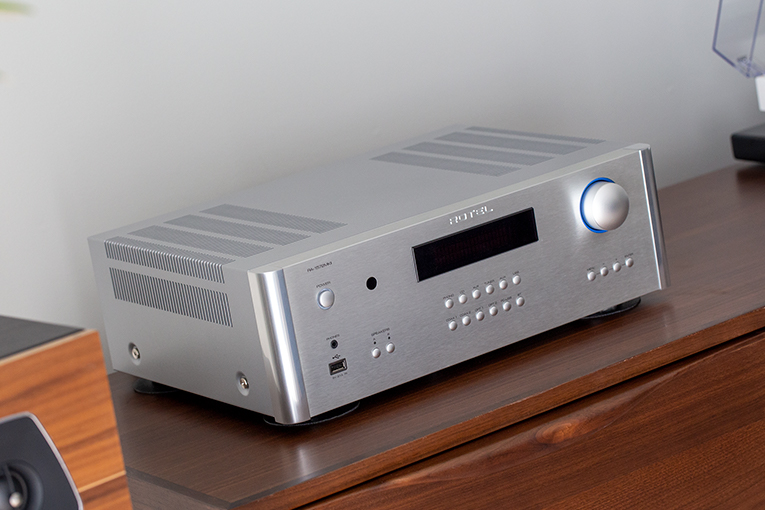
Whereas I’m writing about the Lumina IIIs after Diego’s review was published, fellow-writer Roger Kanno will have a full review of the RA-1572MKII on this site in June, replete with loads of measurements from our lab. He sent the RA-1572MKII to me after finishing his assessment. Because Roger’s review will go into more detail, I’m going to skim over most of the specs and many of the features to just touch on the things that could interest budget shoppers looking to move up.
The RA-1572MKII is pretty big—it measures about 17″W × 12.75″D × 5.75″H, with feet but excluding controls and connectors. But in the silver-colored finish we received, I thought it was attractive and not too visually obtrusive (it also comes in matte black). However, the size and appearance aren’t likely why a budget shopper might consider an amp this expensive. Instead, it’s because the RA-1572MKII delivers a higher power output than most lower-priced, high-quality integrated amplifiers—120Wpc into 8 ohms, whereas all of the integrated amplifiers I’ve written about in this column so far have been rated at 60Wpc, or less, into 8 ohms. Having double the power or more means that the RA-1572MKII can make your speakers play louder. It also makes it compatible with a greater range of speakers, since some need higher power than others to allow them to sing. Having more power is rarely a bad thing.
The RA-1572MKII also has a strong feature set, as well as plenty of input options. For example, it has a digital-to-analog converter (DAC) section that supports PCM music files up to 32-bit/192kHz, providing you feed the signal from a computer through to its rear-panel USB input, which also supports MQA. It also has four more digital inputs back there that accept PCM files up to 24/192: two S/PDIF coaxial (RCA) and two S/PDIF optical (TosLink). The RA-1572MKII also has Qualcomm’s aptX over Bluetooth built in, which also supports AAC. This is handy for quick, hi-rez wireless playback from, say, your phone. There’s also a USB port on the front panel, which I didn’t try, but the instruction manual says you can use that to stream music from your iOS-based phone or tablet, too.
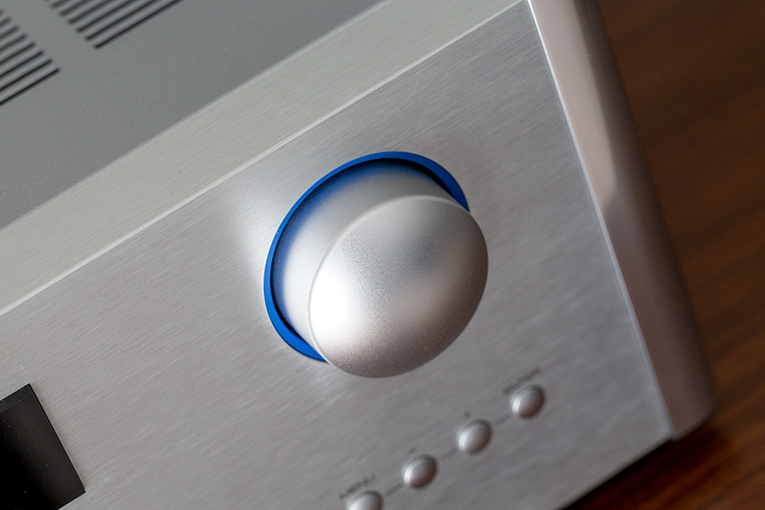
On the analog side, there is a phono input for the onboard moving-magnet (MM) phono stage on the rear panel. Beside it are three pairs of single-ended line-level inputs (RCA) and one pair of balanced line-level inputs (XLR). While most people will use the RA-1572MKII with speakers, there’s also a 1/8″ headphone jack on the front panel, directly above the USB port for the phone.
For those who wish to tweak the tonal balance, treble and bass tone controls are provided. They can be adjusted or completely disabled (i.e., bypassed) via the onscreen menu system, which shows on the small front-panel display. You can get into and control the menu system and its settings either by using the pushbuttons and volume control on the RA-1572MKII’s front panel, or with the supplied remote control, which, at a glance, seems to have all the functionality the front panel has and then some, such as CD player controls for other Rotel products. But as handy as tone controls are, purists will probably eschew them—which is what I did for this assessment.
Setup
The room that houses the components for my “System One” column measures about 19′ long by 15′ wide, with an 8′-high ceiling. With the components set up along one of the shorter walls, speaker positioning hasn’t been tricky in this room. I positioned the Luminas the same way as other speakers I’ve had in there—centered along the wall (i.e., equidistant to the side walls), 8′ apart from tweeter center to tweeter center, and with about 2′ of space to the wall behind them.
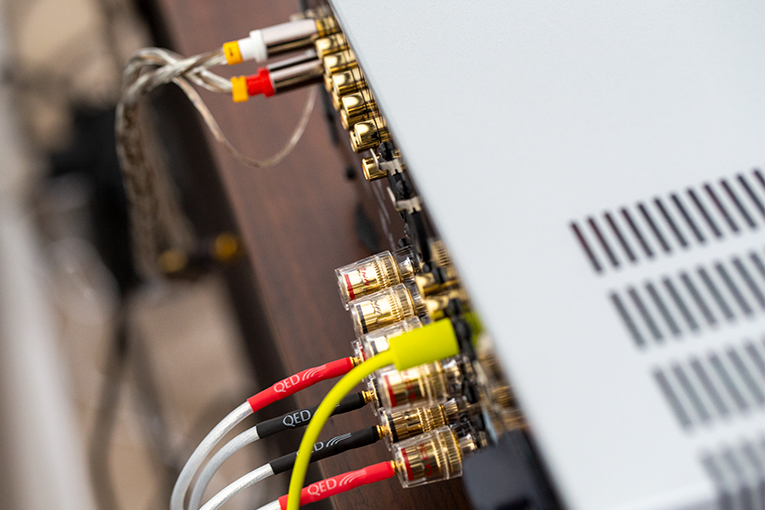
Since Rotel has some 60 years of product-development experience, you wouldn’t expect hiccups in setup and operation from a product they make—and there weren’t any. I connected the optical cable from my Chromecast Audio streamer to one of the TosLink inputs, the phono cable leads from my Pro-Ject X1 turntable with its Pick it S2 MM cartridge to the left/right phono jacks, my QED X1 speaker cables to one of the sets of speaker outputs (there are A and B sets to drive two pairs of speakers if required), and the supplied power cord to the IEC-compatible inlet. I then connected the other ends of the speaker cables to the Lumina IIIs and plugged the other end of the power cord into a power socket. I was ready to go.
I pushed the RA-1572MKII’s Power button, located to the top left of the front panel, heard it click on, saw a ring around the Power button light up blue, and then saw a message on the display that told me that the tone controls were bypassed and the volume was at 45. I pushed the Phono button on the front panel to select that input and dropped the X1’s needle on side 1 of Steely Dan’s Aja (LP, ABC Records 9022-1006)—but heard nothing. That sound of silence made my heart skip a beat because one of the last things any reviewer wants is to have to contact the company with a problem and possibly have to wait for a replacement to arrive. Then I noticed the A and B pushbuttons under the Speakers label on the front panel, so I pushed A and sound came out at high volume. Too high, actually.
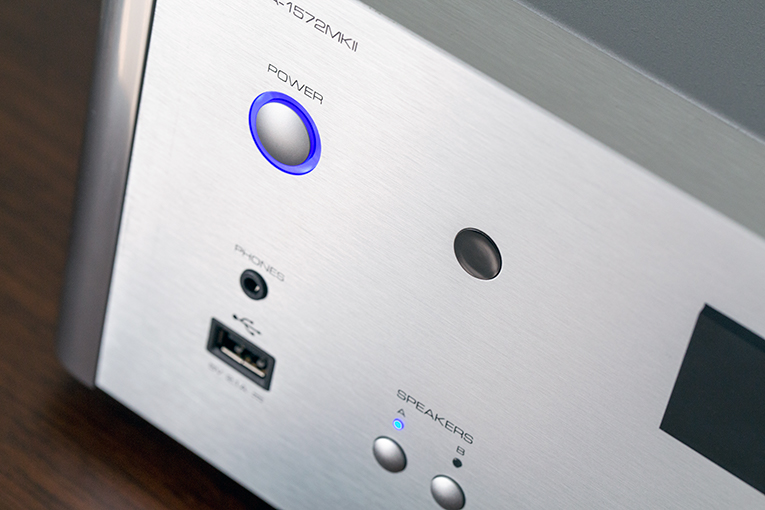
I looked at the manual and learned that 45 is the RA-1572MKII’s default volume level, so I took this as an opportunity to see if I could quickly and easily change the power-on volume level without looking at the manual again—for me, a sign of whether a product is intuitive to use. I pushed the Menu button and saw the front-panel display screen change, so I knew I could change settings with it. I repeatedly pressed the button to see different menu options appear on the screen until I got to the one called Power On Max Volume, which showed a value of 45. I turned the volume knob to bring it down to 25. Then, I used the Menu button to cycle through more settings until I was finally back to the screen where I started. I powered the RA-1572MKII off and back on to make sure the changed setting “stuck.” It did—the RA-1572MKII powered on at 25. Easy enough.
Sound(s)
I’d let Aja continue playing as I was fiddling with the power-on volume setting, but before I sat down to start serious listening, I let the record play out that side to warm up the amp a bit more. I then switched to Bruce Springsteen’s Tunnel of Love (LP, Columbia Records OC 40999), which I’d already played many times through the Lumina IIIs when the Music Hall a15.3 integrated amplifier, which I wrote about in March, was powering them. At just $549, the a15.3 is a stone-cold bargain for budget-minded audiophiles looking for a basic integrated amplifier with minimal features (it has an MM phono stage and headphone amp, but no DAC) and who don’t require much power—the a15.3 is rated at 50Wpc into 8 ohms, though in fairness to it, we measured its maximum power output at 63Wpc (at 1% THD+N). The a15.3 drove the Lumina IIIs, which we also measured and found to have a slightly above-average sensitivity of 88.95dB (2.83V/1m), pretty easily.
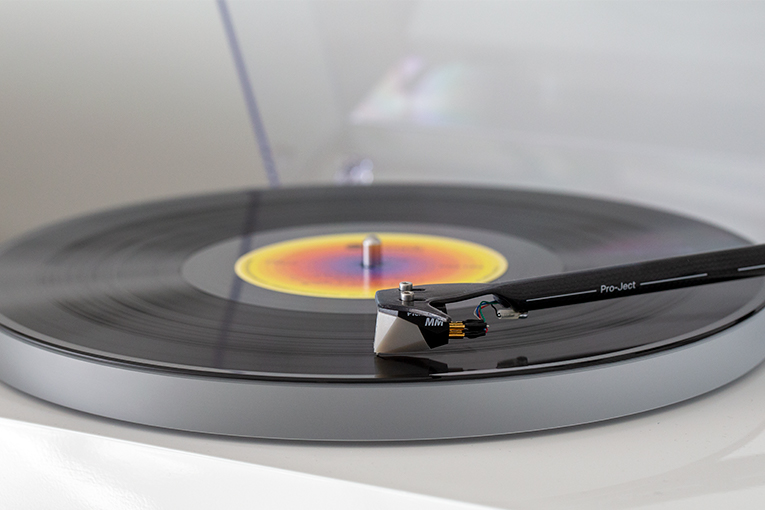
Track 1 on Tunnel’s side 1, “Ain’t Got You,” features Springsteen’s vocal and guitar coming pretty much only from the right speaker and his harmonica and some percussion instruments through the left speaker, which leaves a giant hole in the middle. This spare, midrange-focused recording didn’t challenge the amplifier’s speaker-driving capabilities, but it did tell me that the RA-1572MKII, through its phono input, offers a very transparent and highly detailed presentation—Springsteen’s voice and the accompanying instruments were so cleanly reproduced that they practically sparkled. Cucuzza told me that the Lumina III has been deliberately voiced to have a little more treble energy than Sonus Faber speakers before it, which showed with this recording—the top end of Springsteen’s guitar sounded more lively than it did through speakers with a more neutral top end. But it wasn’t the RA-1572MKII that was adding more to the treble—the guitar’s top end sounded similar when the a15.3 was driving the speakers, and I found that to be a neutral-sounding amp.
As I let the rest of the tracks on that side play out, I found that the sound wasn’t just clean sounding—it was smooth and easy to listen to, but not glossed over and lacking in detail. For example, when I played “Cautious Man,” Springsteen’s voice, the ambience around it, the guitar accompanying him, and the subtle amount of soundstage depth that had been captured were all easy to hear—yet the sound was still super-easy on the ears. And while I wasn’t playing the Tunnel of Love’s songs any louder than I did with the a15.3, I felt the sound was a little more effortless and open with the RA-1572MKII. This didn’t really surprise me. I’ve often found that even at volume levels that are well within a lower-powered amp’s limits, all other things being equal, a higher-powered amp can often sound more effortless and open. The analogy I like to use is that it’s like having a very big motor in a small car—you can sense more power there even if you’re not using it all.
But I didn’t want to give the RA-1572MKII an easy time. After I’d listened to several more LPs through the Lumina IIIs, I moved them aside and brought in a pair of Paradigm Founder 100F speakers to test the amp’s power output. The 100Fs had just arrived, so this test also allowed me to start their break-in process, which simply means playing bass-heavy music through them for several hours so the drivers’ suspensions loosen up.
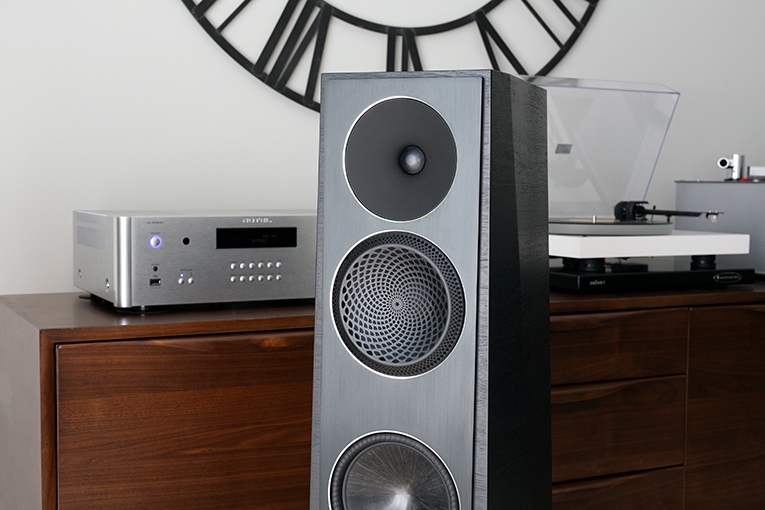
The 100F retails for $5199.98/pair and is a large, floorstanding, three-way speaker with five drivers—with three of the drivers being 7″ woofers. Over the course of a few days, I played music through these speakers, streaming from Tidal to the RA-1572MKII’s DAC via the Chromecast Audio. I listened from low to extraordinarily high volumes—and the RA-1572MKII drove the 100Fs just fine, with great clarity across the audioband and tremendous bass extension when the music called for it. All the while, the amp never became more than just warm. I wouldn’t call the RA-1572MKII a powerhouse, but I would call it powerful, and nothing I experienced in those days indicated that the RA-1572MKII wouldn’t be a good partner for a pair of 100Fs.
That diversion over and with the 100Fs moved up and into my reference room for future review, I swapped the Lumina IIIs back into the system with the intent to challenge them and the RA-1572MKII a little more than I had previously. I kept with Tidal streaming and selected “Dark but Just a Game,” the only track on Lana Del Rey’s latest album, Chemtrails Over the Country Club (16/44.1 FLAC, Interscope Records/Tidal), that has super-deep bass. Both the RA-1572MKII and Lumina IIIs really surprised me, because I could hear powerful bass frequencies down to around 30Hz. And that bass wasn’t just deep—it sounded tight in a way that indicated to me that the woofers were always fully in control of what they were outputting, not just “flopping around.” The Lumina III can’t reach down to 20Hz, which is the bottom of the audioband, but it is a compact tower that can reach commendably low and sound satisfyingly fleshed out.
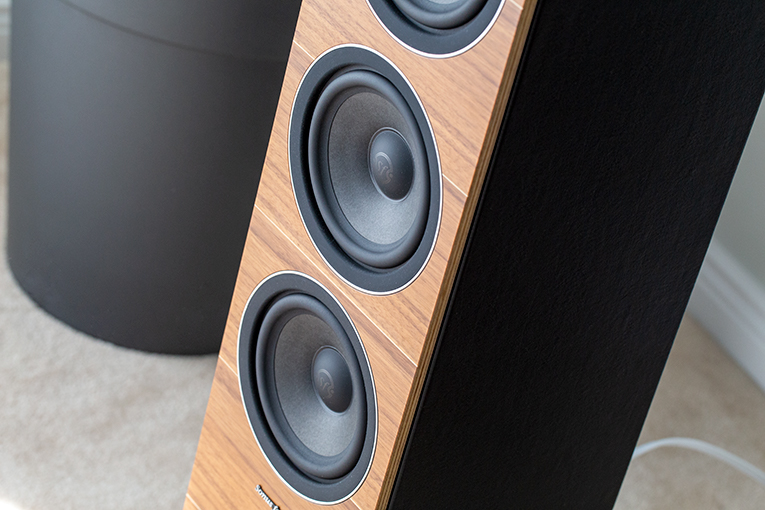
When I first heard Chemtrails Over the Country Club’s first track, “White Dress,” on my upstairs reference system, I found it so bass-shy and trebly that I couldn’t help but wonder if the master for the LP release had accidentally been used for the digital version. (For vinyl, the mastering engineer must boost the highs and cut the bass substantially, so the stylus can track the grooves of the record properly.) Now, the Lumina III’s tipped-up treble was on display—it was very easy to hear the way the wispiness and sibilance of her voice had been recorded—but the sound wasn’t too trebly, or, what can be the curse of any audio product, way too bright. But what was more noticeable on this and the next track, the title cut, was the Lumina III’s gorgeous midrange—the speakers projected Del Rey’s vocals with great presence and loads of detail, sounding a far cry from Sonus Faber speakers of yesteryear, which, to my ears, could sound a little laid back and, in some instances, dark.
I then searched Tidal for recently played songs and found something my wife had been playing: Marc Anthony’s cover of Polo Montañez’s “Flor Pálida,” from his album 3.0 (16/44.1 FLAC, Sony Music Latin/Tidal). If you haven’t heard songs from this album before, which, in 2014, received a Latin Grammy Award for Best Salsa Album, I encourage you to listen to it. Anthony’s soaring vocals are exceptionally well recorded, as are the instruments—mainly acoustic—that accompany him. All have been recorded clearly, seemingly in large reverberant places, and with a decent amount of dynamic range. It’s a really good test of a hi-fi system’s capability to sound like live music, particularly if you play it LOUD. And that’s how I played it—and with the RA-1572MKII driving them, the Lumina IIIs responded in kind. They presented a lifelike sound in my room that was, at times, approaching ear-ringing volume levels, but all the while remaining clear.
After “Flor Pálida,” I played the album’s first track, the well-known “Vivir Mi Vida,” even louder. The accompaniment to Anthony’s singing on this track uses more instruments in a more complex music arrangement than “Flor Pálida.” Here, the Lumina III’s lively high frequencies were a bonus: the speakers conveyed the higher-frequency percussive instruments in an immediate and exciting way; the detailed midrange allowed his voice to fly into the room like he was there; and the bass, while not particularly deep, was always rock solid, which kept the drumming tight. Then, I ramped the volume right down, to lower than what most would consider a normal listening level, and could still hear a clean, detailed presentation that was exciting to listen to. From high to low volumes, the Sonus Faber–Rotel combination sounded fabulous.
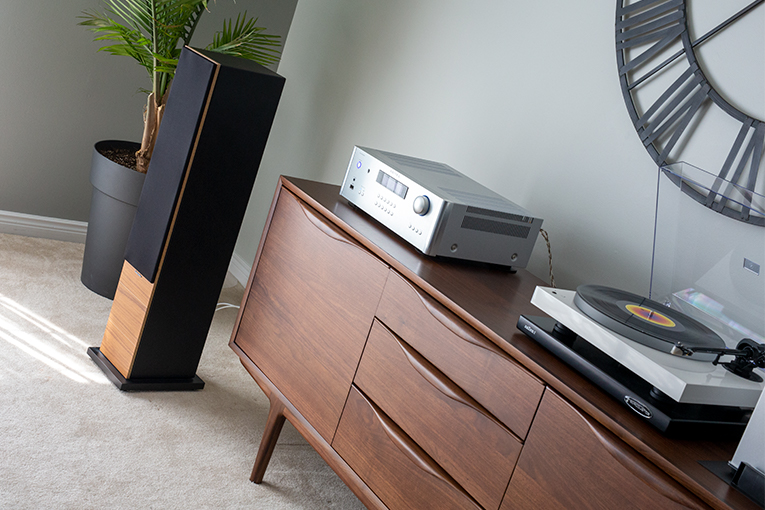
Just when I thought those two songs had completed the sonic story of the Rotel and the Sonus Fabers, I decided to play “C’est la vie,” the title track of Algerian singer Khaled’s 2012 album (16/44.1 FLAC, Cz Sounds Rec./Tidal). Khaled sings in a musical genre called Raï. If you’re familiar with Anthony’s “Vivir Mi Vida,” once you’re a few seconds into “C’est la vie,” your eyebrows will likely go up, like mine did the first time I heard it, and you’ll realize Anthony’s “Vivir Mi Vida” is a salsa-flavored cover of Khaled’s song. But a really good remake—and better recorded, which was obvious when I played them back to back. “C’est la vie” sounded a little bouncier and fuller in the bass than “Vivir Mi Vida” did, but its midrange sounded more congested, and Khaled’s voice, while apparent enough, didn’t float as freely into the room as Anthony’s. I don’t fault the system for the sound of “C’est la vie”—it’s the way it was recorded. Yet there are still plenty of musical details to hear in the track, and those details, plus the differences in the sounds of the two recordings, were a snap to hear through the Rotel and Sonus Faber setup. That’s what you want from a good stereo system—reproduction of recordings in a way that tells you exactly what’s there.
Double up or stay down?
As I sat down to write this, I never intended to make the Rotel RA-1572MKII amp and Sonus Faber Lumina III loudspeakers sound like companions—as if they were made for each other. But the more I listened to them, the more I realized that they do work exceptionally well together. If someone were to ask if they should be purchased together, I’d have no qualms recommending the combination.
But my real intention in writing about these products was to let people know if either one had enough individuality to make it worthwhile jumping up from a much lower-priced integrated amp or speakers. In that regard, the Rotel RA-1572MKII integrated amplifier has a great build and a strong feature set, but what sets it apart is that it combines these qualities with much higher power than most budget integrated amplifiers can deliver. If you don’t need all that power, then you can obviously get away with spending less money on a lower-powered integrated amplifier, even from Rotel. But if you need the higher power for your current speakers, or want the peace of mind of knowing you have enough power for any speakers you might think of getting down the road, then the extra money for the RA-1572MKII would be very well spent.
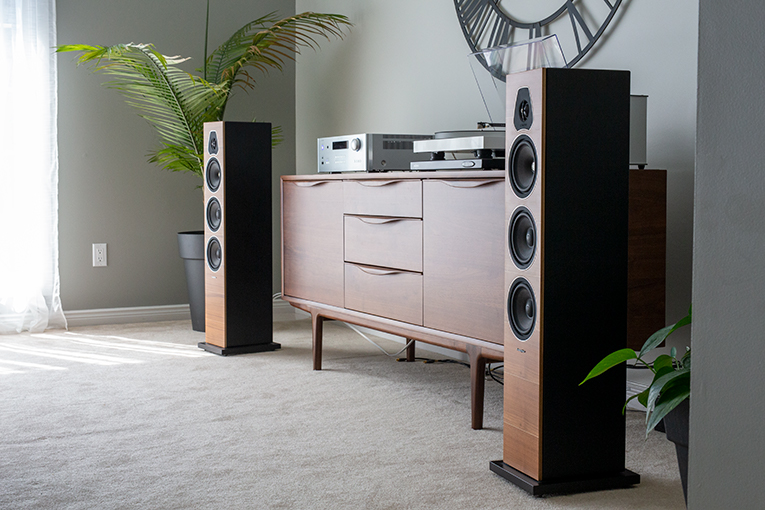
For the Lumina III loudspeaker, there are a few things to consider. But above all of them is its main selling point: a unique sound, which has to be listened to by every prospective buyer to be sure if it will appeal to them. It’s different from Sonus Fabers of the past, and other similar speakers out there, in the ways I have described. I really liked what I heard, but when it comes to a purchase at this price point, you have to try before you buy—as always, with anything. Following that in importance, at least for me, are good build quality, great styling (particularly in the wood-type finishes), and the prestige of owning something that’s been made in Italy.
That made-in-Italy pride of ownership may be the last item on my list, but it’s still no small thing. Many lower-priced speakers are designed top to bottom by the companies that sell them, but the manufacturing often gets contracted out to a third-party company, usually in another country where labor costs are lower, to enable them to compete on price. So it becomes designed here, but made elsewhere by someone else. By being made in Italy—halfway between Venice and Verona—in the same factory as the company’s most expensive speakers makes all the Lumina models a far cry from that. All told, if you can afford them, want stellar styling, appreciate the appeal of luxury goods, and place importance on where something’s made, then definitely seek out a pair of Lumina IIIs and see if their most important attribute—sound—also appeals. If you can check all those boxes, then stepping up to a pair of Lumina IIIs is probably worth it, too.
. . . Doug Schneider
das@soundstagenetwork.com






















